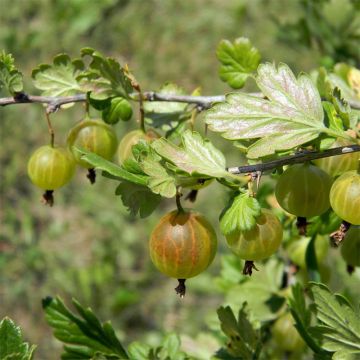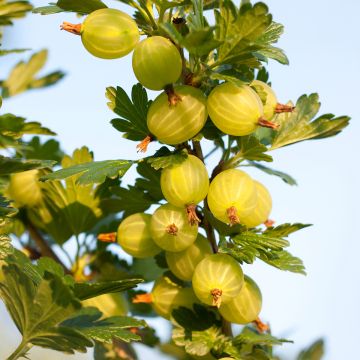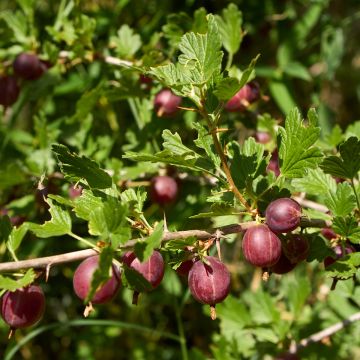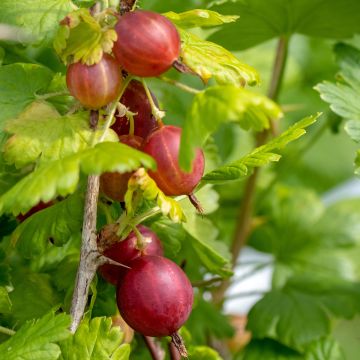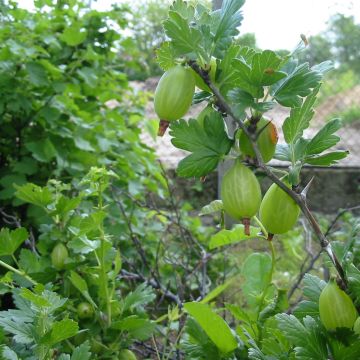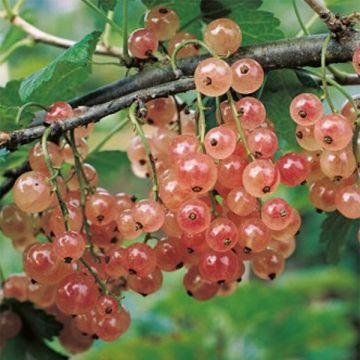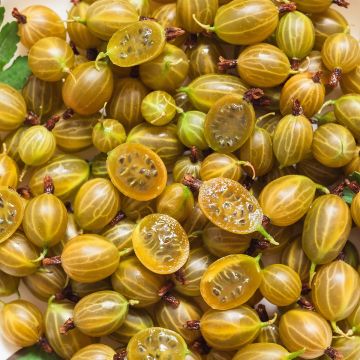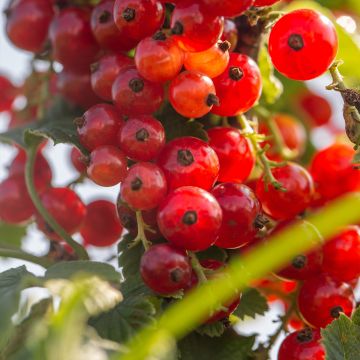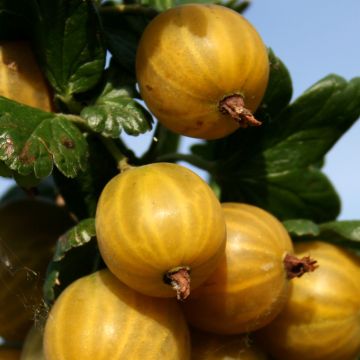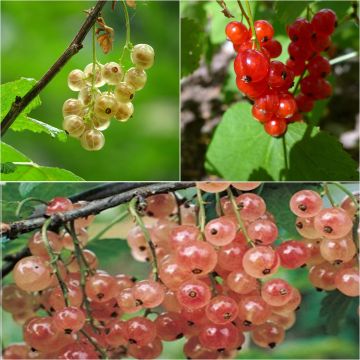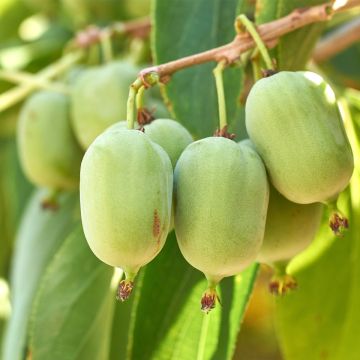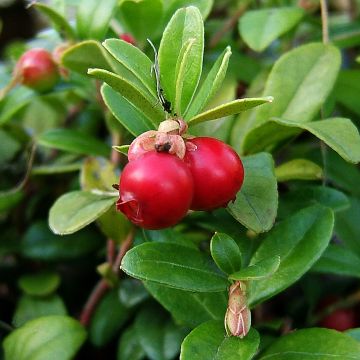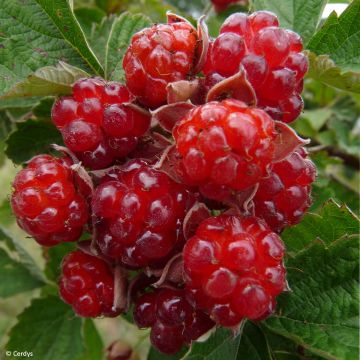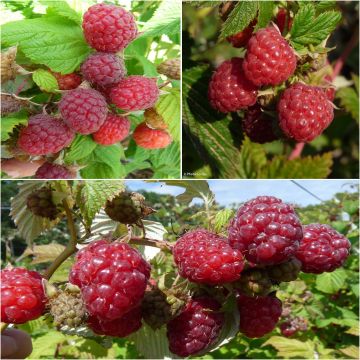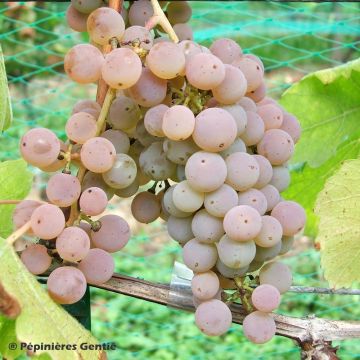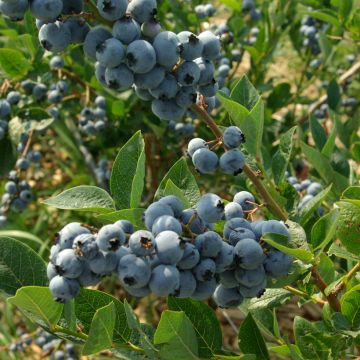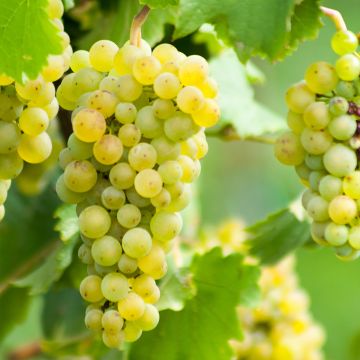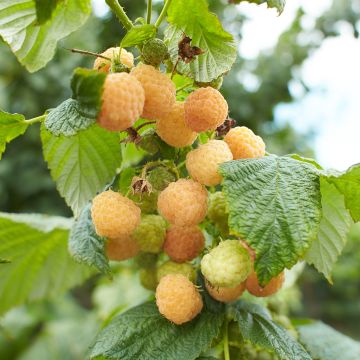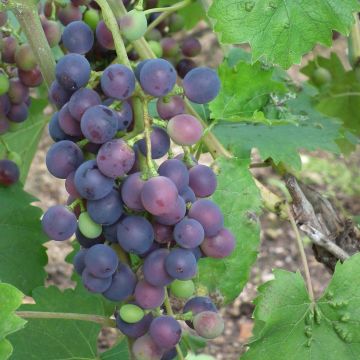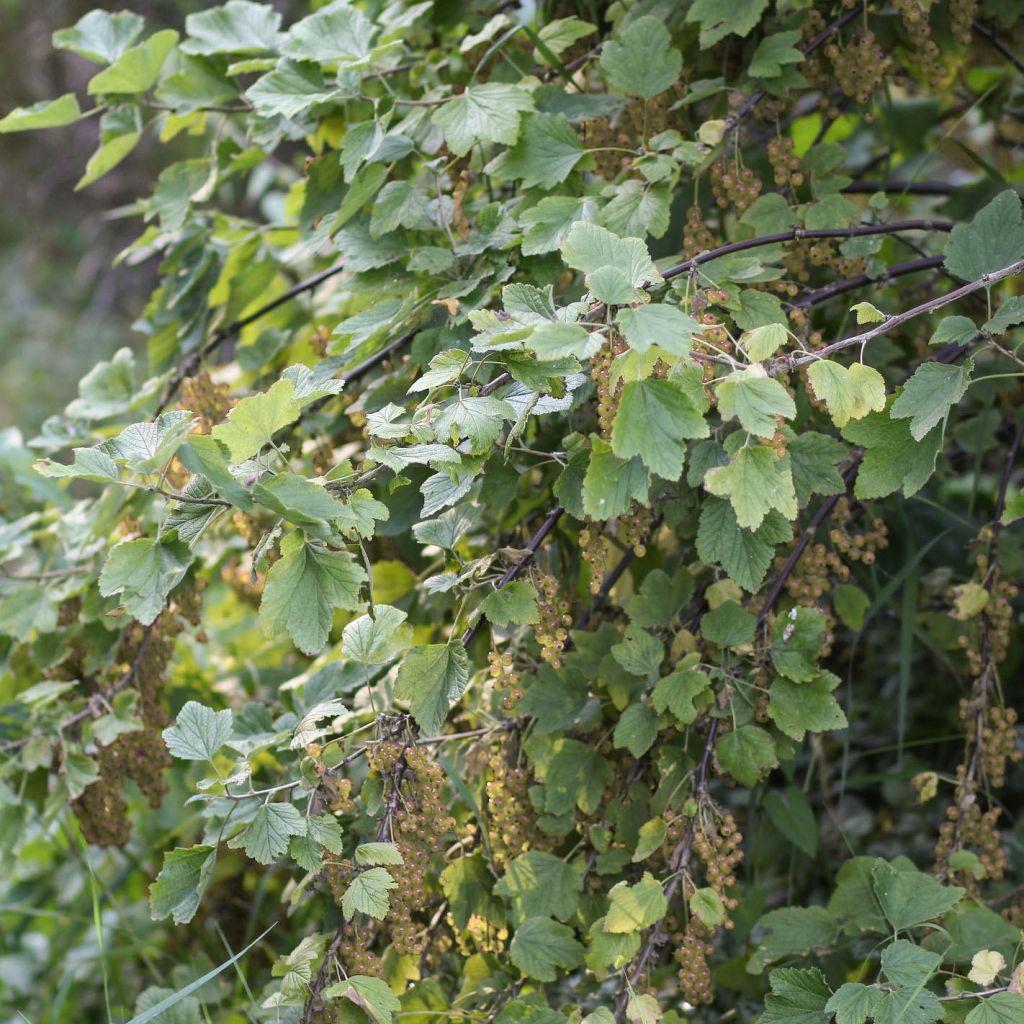

Ribes rubrum Hollande blanche - Whitecurrant
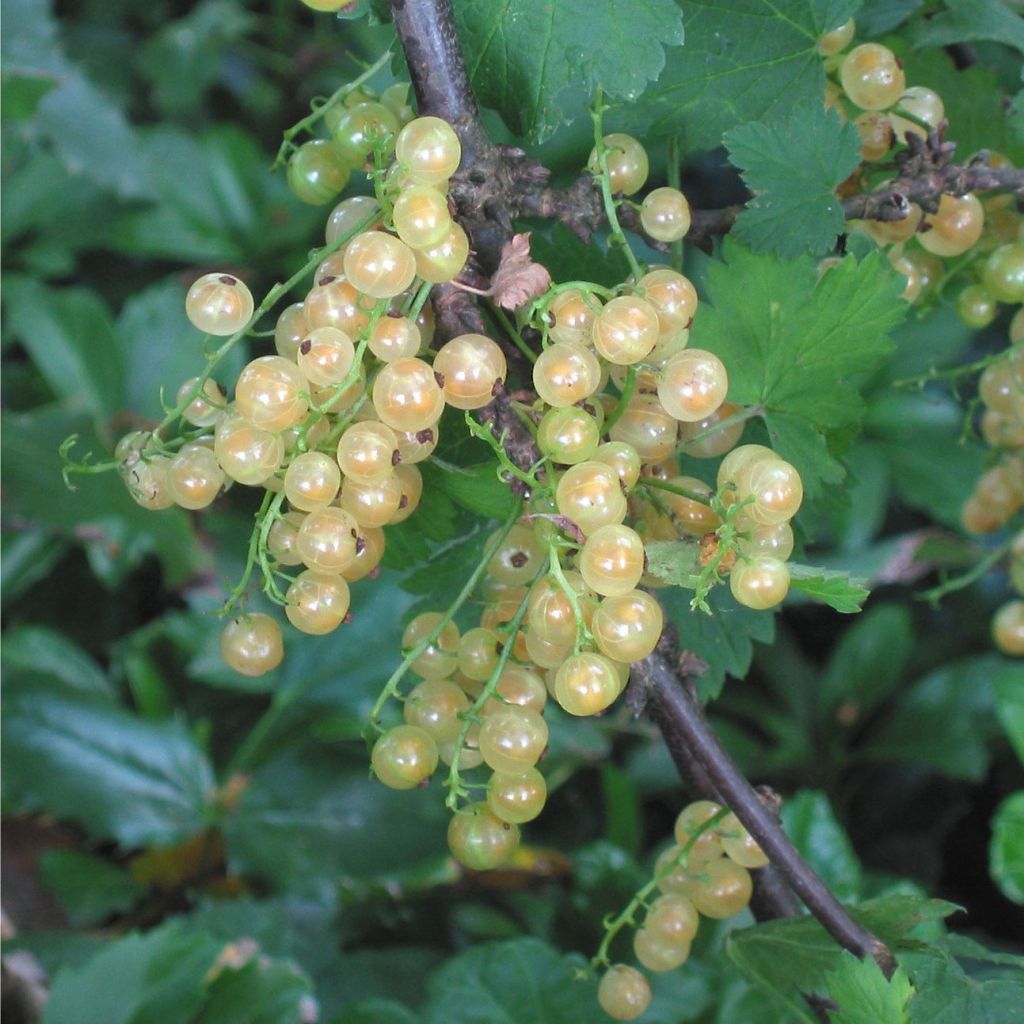

Ribes rubrum Hollande blanche - Whitecurrant
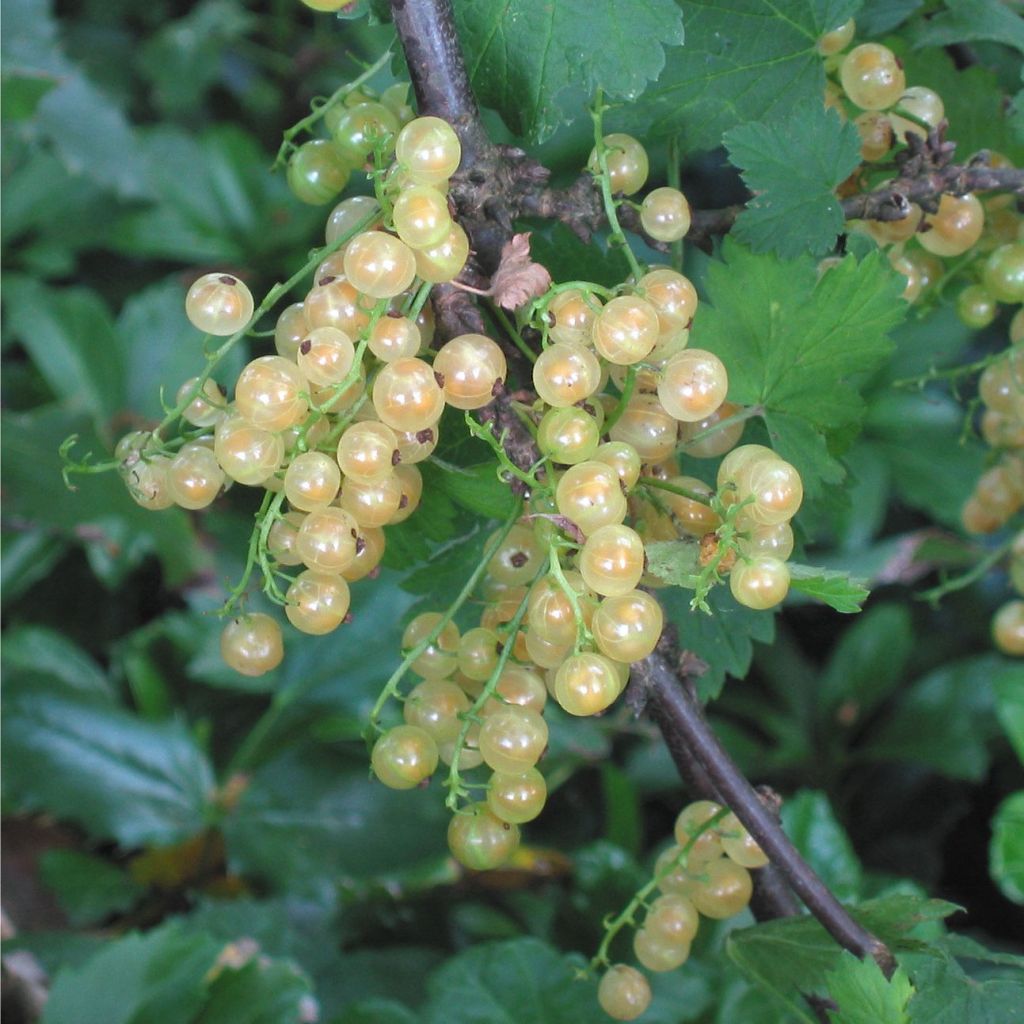

Ribes rubrum Hollande blanche - Whitecurrant
Ribes rubrum Hollande blanche - Whitecurrant
Ribes rubrum Hollande blanche
Whitecurrant
This item cannot be shipped to the selected country
Delivery charge from €5.90
More information
Schedule delivery date,
and select date in basket
This plant carries a 6 months recovery warranty
More information
We guarantee the quality of our plants for a full growing cycle, and will replace at our expense any plant that fails to recover under normal climatic and planting conditions.
From €5.90 for pickup delivery and €6.90 for home delivery
Express home delivery from €8.90.
Description
With regular and abundant production, this Dutch Whitecurrant Bush is a vigorous variety with large white berries tinged with pink, and nicely branched vegetation. Its tasty fruits have a sweet flavour and a delightful fragrance. The currants can be harvested from mid-July. It is an excellent variety that offers a good yield. Not too acidic, it is well suited for eating straight from the bush and is ideal for the table. Easy to grow in non-scorching sunlight, in well-drained, even poor, soil.
The Currant Bush, also known as Ribes rubrum, belongs to the Grossulariaceae family. It is a plant that has been cultivated for a long time and grows spontaneously in many temperate regions of the Northern Hemisphere, from Europe to Siberia, and to Manchuria. 'Dutch White' is a bushy, thornless shrub with a tufted habit of slightly stiff, branches, with soft wood. This bush will reach a height of 1.30m (4ft) with a width of 1m (3 to 4ft). The foliage is deciduous, composed of palmate, lobed, and aromatic leaves, medium green. Flowering occurs in early May, in the form of clusters of small, inconspicuous greenish to brownish flowers, intensely visited by bees. Fruiting occurs mainly on one and two year old branches. The bush is then covered with numerous clusters of small round and translucent berries, initially green then white-pink, 6mm (0.2in) in diameter, containing small seeds. Harvesting takes place as the fruits ripen, starting from mid-July. The currants have pale, juicy, sweet, and slightly acidic flesh. Currants are low-calorie fruits (whether white or red), rich in minerals and trace elements, as well as potassium, calcium, and phosphorus. They also provide a good source of vitamin C and fibre. The yield of this variety is good, around 6kg per plant if the growing conditions are optimal. The root system is shallow.
Use fresh currants in jelly or pastry, for tart fillings or sorbets. In the garden, this bush becomes attractive when laden with its long clusters of translucent pearls that play with the summer light. The pleasure is threefold, visual, gastronomic and olfactory, when its warm foliage scents the garden. It pairs well with varieties of pink or red currants, gooseberry bushes, as well as shrubs that offer a beautiful non-edible fruiting display, such as Leycesteria formosa, beautyberries, Nandina domestica and its varieties, Japanese quinces, small-leaved Cotoneaster, St. John's wort Magical Beauty, symphoricarpos... For small gardens or to save space, it is wise to train this 'Dutch White' currant bush against a wall or as a standard. Note that the currant bush can also be grown in a terrace orchard, as it performs well in large pots, with a depth of at least 40cm (15.7in), while avoiding watering it with excessively hard water.
The wild currant Ribes rubrum has medicinal properties. It is used for the treatment of rheumatism and infectious diseases, especially when the fruits are consumed fresh.
Report an error about the product description
Ribes rubrum Hollande blanche - Whitecurrant in pictures
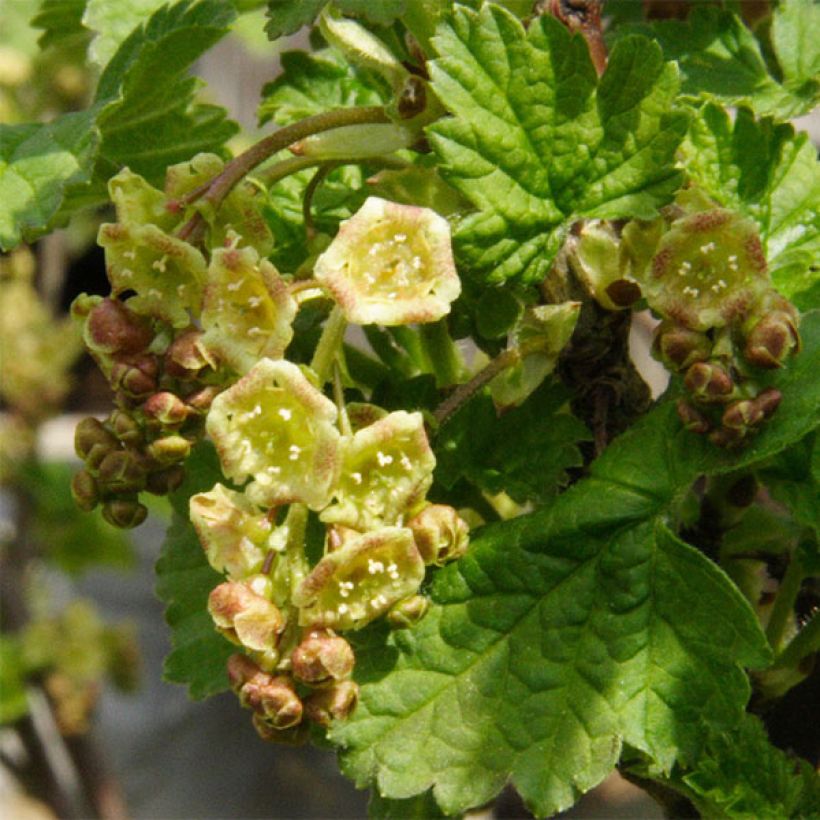

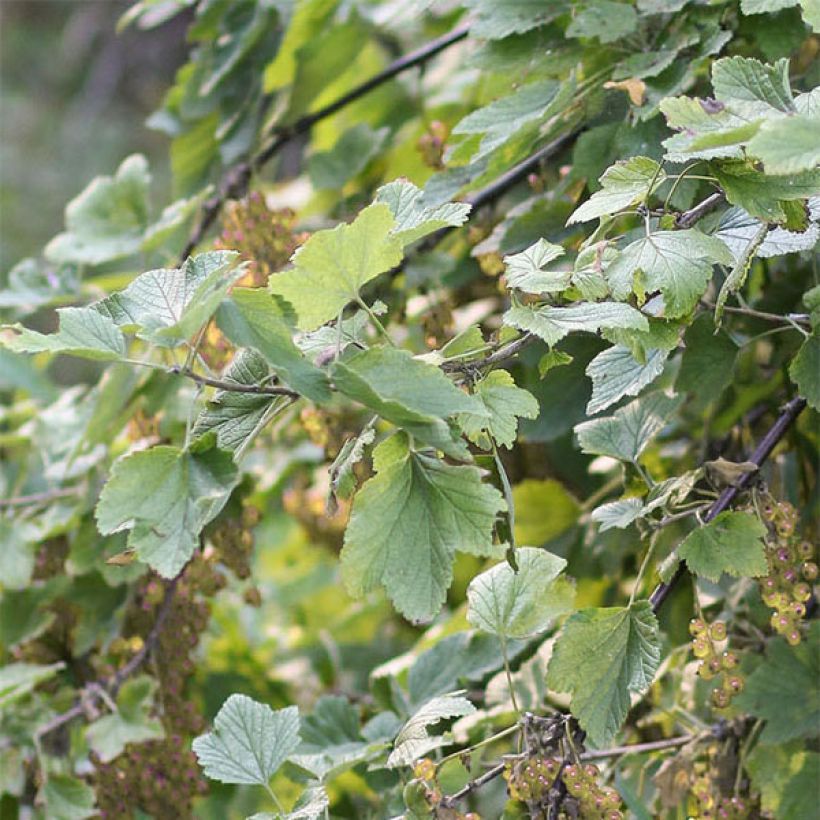

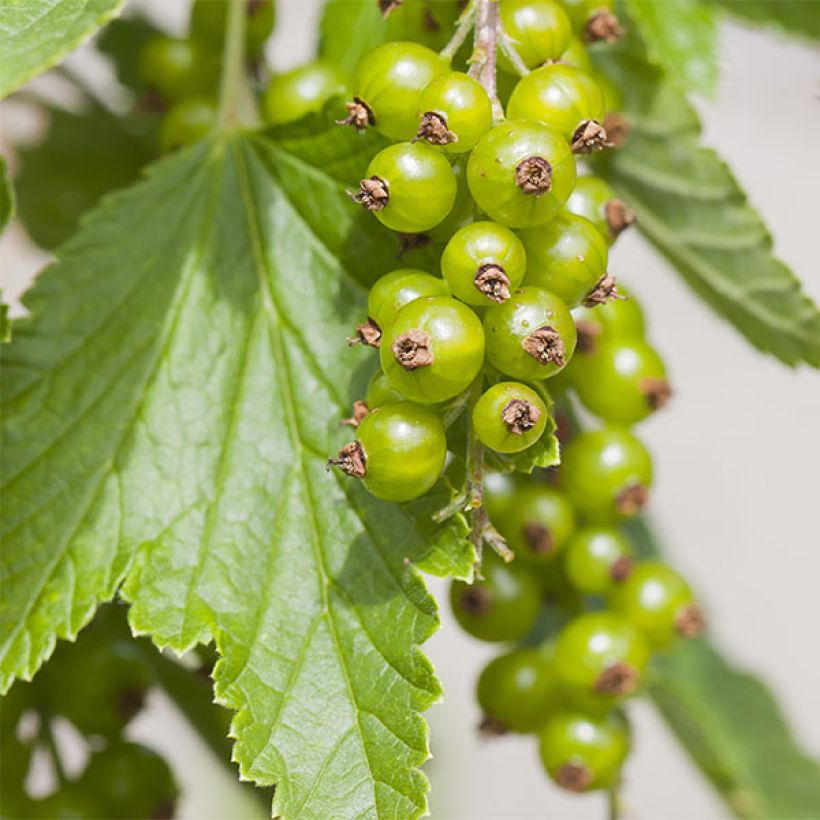

Plant habit
Fruit
Flowering
Foliage
Botanical data
Ribes
rubrum
Hollande blanche
Grossulariaceae
Whitecurrant
Cultivar or hybrid
Other Redcurrant bush
Planting and care
Plant the 'White Holland' whitecurrant from October to March in ordinary, well-drained or even poor soil, without too much limestone, moist but not constantly wet. An indirect sun exposure or partial shade in a place sheltered from strong winds will yield good results. The currant dislikes heat and drought. An application of organic fertilizer at the start of vegetation will support fruit production and plant health. It is an accommodating bush, not very susceptible to diseases. It has a few enemies, such as scale insects and mites, which can be eliminated by a winter treatment. In March-April, before flowering, a fungicide can be sprayed. In June-July, the harvest can be protected with nets to deter the greed of birds. To get rid of raspberry worms, which can sometimes be found on currants, some recommend mulching the base or sowing forget-me-nots along the row; the latter are reputed to repel them. It is important in a currant plantation, as in any plantation, to alternate varieties and species when space allows: pollination will be promoted, and the spread of epidemics or diseases will be limited, making treatments optional or even unnecessary in some cases. Care must be taken not to damage the roots, which remain near the surface, when digging near the plants.
Planting period
Intended location
Care
-
, onOrder confirmed
Reply from on Promesse de fleurs
Berries
Haven't found what you were looking for?
Hardiness is the lowest winter temperature a plant can endure without suffering serious damage or even dying. However, hardiness is affected by location (a sheltered area, such as a patio), protection (winter cover) and soil type (hardiness is improved by well-drained soil).

Photo Sharing Terms & Conditions
In order to encourage gardeners to interact and share their experiences, Promesse de fleurs offers various media enabling content to be uploaded onto its Site - in particular via the ‘Photo sharing’ module.
The User agrees to refrain from:
- Posting any content that is illegal, prejudicial, insulting, racist, inciteful to hatred, revisionist, contrary to public decency, that infringes on privacy or on the privacy rights of third parties, in particular the publicity rights of persons and goods, intellectual property rights, or the right to privacy.
- Submitting content on behalf of a third party;
- Impersonate the identity of a third party and/or publish any personal information about a third party;
In general, the User undertakes to refrain from any unethical behaviour.
All Content (in particular text, comments, files, images, photos, videos, creative works, etc.), which may be subject to property or intellectual property rights, image or other private rights, shall remain the property of the User, subject to the limited rights granted by the terms of the licence granted by Promesse de fleurs as stated below. Users are at liberty to publish or not to publish such Content on the Site, notably via the ‘Photo Sharing’ facility, and accept that this Content shall be made public and freely accessible, notably on the Internet.
Users further acknowledge, undertake to have ,and guarantee that they hold all necessary rights and permissions to publish such material on the Site, in particular with regard to the legislation in force pertaining to any privacy, property, intellectual property, image, or contractual rights, or rights of any other nature. By publishing such Content on the Site, Users acknowledge accepting full liability as publishers of the Content within the meaning of the law, and grant Promesse de fleurs, free of charge, an inclusive, worldwide licence for the said Content for the entire duration of its publication, including all reproduction, representation, up/downloading, displaying, performing, transmission, and storage rights.
Users also grant permission for their name to be linked to the Content and accept that this link may not always be made available.
By engaging in posting material, Users consent to their Content becoming automatically accessible on the Internet, in particular on other sites and/or blogs and/or web pages of the Promesse de fleurs site, including in particular social pages and the Promesse de fleurs catalogue.
Users may secure the removal of entrusted content free of charge by issuing a simple request via our contact form.
The flowering period indicated on our website applies to countries and regions located in USDA zone 8 (France, the United Kingdom, Ireland, the Netherlands, etc.)
It will vary according to where you live:
- In zones 9 to 10 (Italy, Spain, Greece, etc.), flowering will occur about 2 to 4 weeks earlier.
- In zones 6 to 7 (Germany, Poland, Slovenia, and lower mountainous regions), flowering will be delayed by 2 to 3 weeks.
- In zone 5 (Central Europe, Scandinavia), blooming will be delayed by 3 to 5 weeks.
In temperate climates, pruning of spring-flowering shrubs (forsythia, spireas, etc.) should be done just after flowering.
Pruning of summer-flowering shrubs (Indian Lilac, Perovskia, etc.) can be done in winter or spring.
In cold regions as well as with frost-sensitive plants, avoid pruning too early when severe frosts may still occur.
The planting period indicated on our website applies to countries and regions located in USDA zone 8 (France, United Kingdom, Ireland, Netherlands).
It will vary according to where you live:
- In Mediterranean zones (Marseille, Madrid, Milan, etc.), autumn and winter are the best planting periods.
- In continental zones (Strasbourg, Munich, Vienna, etc.), delay planting by 2 to 3 weeks in spring and bring it forward by 2 to 4 weeks in autumn.
- In mountainous regions (the Alps, Pyrenees, Carpathians, etc.), it is best to plant in late spring (May-June) or late summer (August-September).
The harvesting period indicated on our website applies to countries and regions in USDA zone 8 (France, England, Ireland, the Netherlands).
In colder areas (Scandinavia, Poland, Austria...) fruit and vegetable harvests are likely to be delayed by 3-4 weeks.
In warmer areas (Italy, Spain, Greece, etc.), harvesting will probably take place earlier, depending on weather conditions.
The sowing periods indicated on our website apply to countries and regions within USDA Zone 8 (France, UK, Ireland, Netherlands).
In colder areas (Scandinavia, Poland, Austria...), delay any outdoor sowing by 3-4 weeks, or sow under glass.
In warmer climes (Italy, Spain, Greece, etc.), bring outdoor sowing forward by a few weeks.

































